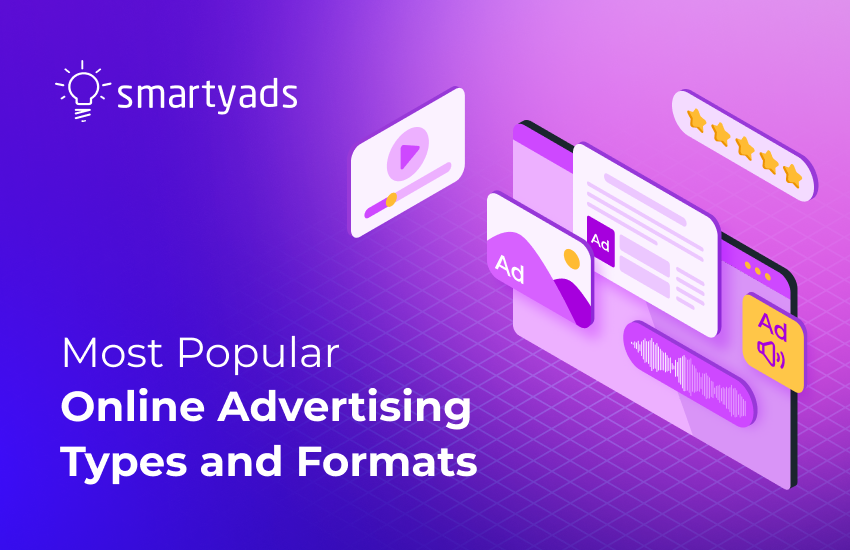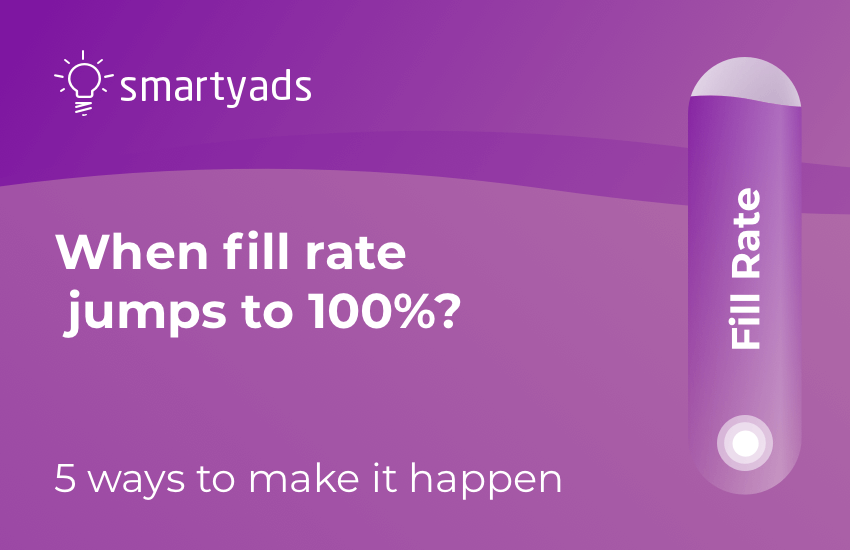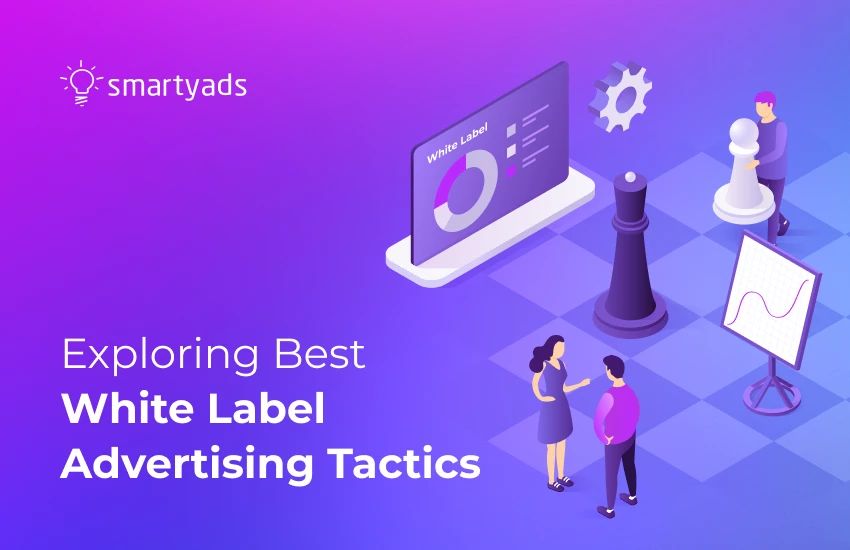There are over 200 million active websites in the world, but only ten positions on the 1st page of the Google search result. At least five new websites are launched every second, but 98% of them are destined to have less than 3000 visitors per month. This sounds quite frustrating, but it’s possible to avoid drowning in this digital ocean of living dead.
Fortunately, the success of the remaining 2% is not based on luck. It is based on a well-thought-out website advertising strategy. So how to promote your website to beat the mark of 10K unique visitors per month and start driving great amounts of traffic?

A Holistic Approach to Website Promotion is Must
The truth is, you won’t be noticed unless you make an effort to stand out promoting your website by all possible means. People are not ready to spend their precious time to search for the best existing solution, in 67% of cases they just click on one of the top-5 listings in a search result. The competition is fierce, so you need to use every option to fight your path to the top.
Advertising your website, don’t dwell on only one method of attracting potential customers. For example, some marketers stuck on social media but underestimate blogging and vice versa, wondering why they still can’t go beyond 3000 visitors per month.
There are no ”X Ways of How to Promote Your Website”, the way is actually only one. All the aspects of web promotion should be combined in a holistic marketing strategy to produce the best possible results. To make your traffic grow exponentially, consider 5 advertising tools listed below.
Website Advertising Tool #1: Search Engine Optimization
Since ranking algorithms grew smarter, In 2019 Google will pay more attention to the intent formation rather on separate keywords in order to determine the page's relevance. However, to become #1 in the Google search, you have to work pretty hard. In order to create successful SEO campaigns, you need to know beforehand what content type your target audience prefers - text, audio, video or images, and only then decide how to create content.
Useful content is the main factor that influences your website’s position. Google algorithm is smarter than it seems to be: no matter how many relevant keywords you add to your main page, it won’t rank high if the quality of your content is poor.
Still, keywords are essential: your prospects form the search queries on that basis. That’s why you need to build a strong semantic core of your website by selecting the right keywords. The best free tool to do this is Google Keyword Planner or other related tools.
SmartyTip:
According to Hubspot research, 50% of the keywords are 4 words or longer. Long-tail keywords perform better than short-tail because people usually look for something specific by adding 2-3 extra words to the main query. For example, “How to promote a website” is a long-tail keyword, and we bet you used it while looking for tips for “website promotion”, which is the short-tail keyword. We recommend you to focus on long-tail keywords since the competition is lesser, but the return is higher — the targeting is narrower, so you attract exactly the audience you need.
Relevant keywords and quality content are not the only things that can positively affect your SEO ranking. Another effective technique to boost your position in the search result is link building.
First of all, you increase your rating by including a link to the reputable sources to your piece of content. Secondly, your website automatically improves its positions if the reputable source links to your website (this is called backlinking). To earn more links, companies create articles, videos, and other kinds of content to publish on third-party resources, seamlessly incorporating the links to their own website.
SmartyTip:
Don’t want to pay for guest blogging? Then try the “skyscraper technique” that may double your organic search traffic in 14 days, according to Backlinko’s case study. Find a good quality article on the chosen topic and write something better. After that, you reach out to websites that linked to this article and propose linking to yours instead, because your content is more up-to-date and contains more relevant information. You receive backlinks for free, and your website rises above the majority in a search engine.
Website Advertising Tool #2: Social Media Marketing
Even though social media are generally not used for searching goods and services, people spend about 30 minutes per day on each social network.
If your prospects use multiple social networks, then they spend there several hours daily. This way, it’s not surprising that this website marketing tool brings around 20% of traffic to your website.
Apart from high-quality content, which is an unspoken rule, you should focus on increasing your engagement rate on social media. This is the most important benchmark that shows how active your followers are and how effective you are in attempts to engage them. The formula looks like this:
ERR = Total Reactions/Reach * 100%
An average ERR for Instagram varies from 1% to 3.5%, for Facebook across all industries — 0.17%, for Twitter — between 0.09% and 0.33%. If your rates are below these values, it’s time to take action. The fastest method to boost engagement is to run contests, giveaways, and interactive promotions. Relevant questions, polls, and surveys are also good ways to engage your audience and make them buy.
But an indeed killer technique to market your website and increase reposts is video advertising. Why are videos so effective? They are so powerful due to 3 reasons: 64% of customers will more likely buy after watching a video ad, 62% of customers prefer watching a video about the product rather than reading about it, and 55% of people pay closer attention to videos over other kinds of content. Create and serve a video tailored to the needs of your potential customers and gear the video marketing in action making sure you include a quality creative to your campaign.
SmartyTip: Which social network is better for your business? Actually, it's better to establish the presence on all media. But you can choose one of them as a preferred one. Thus, Facebook is perfect for sports, entertainment, retail, and food industries, Instagram works better for fashion, beauty, and fitness when Twitter is more suitable for news and media.

Website Advertising Tool #3: Corporate Blog Posts
At first sight, it’s not very clear how selling goods can be related to blogging but blog posts help you to find and establish a distinctive voice of your brand. Corporate blogging requires a lot of time and efforts, but the example of successful brands prove the worth of it.
For instance, the number of contacts generated from Hubspot’s blog raised from 0 to 4800 during 1 year of active blogging. The posts you write will be indexed by the search engine afterwards so promoting your website today with blogging means attracting new customers tomorrow.
Another great example of how to put the content marketing strategy on practice is SmartyAds blog. Here you can see corporate and industry news, tips on programmatic advertising, and any other pieces of content related to the company’s products and solutions.
SmartyTip:
To get new visitors from your old blog posts, add several paragraphs that contain some trending long-tail keywords. Aside from an opportunity to make an article more SEO-friendly, you can include new links that lead to your recent blog posts.
Website Advertising Tool #4: Email Marketing
Is email marketing dead or growing? This is a subject of concern for many marketers. Email is still a primary channel for lead generation and has a 122% median ROI — which is 4x higher than an ROI of social media.
The effectiveness of email marketing as a tool to drive more traffic to your website can be easily measured. The metric which determines the success of your web promoting the campaign is called a click-through rate (CTR). Formula:
CTR = Impressions/Clicks * 100%
An average CTR for emails ranges from 1.8% to 4.7%. This is the percentage of your leads that read your email and followed the link you included in the call-to-action.
SmartyTip:
- Always include the sharing options to your social media. At least one option boosts your CTR by 30%. Just imagine what happens if you include 3 or 5.
- Make your email copy concise and use only one call-to-action. Your message should be a laser beam, not a drop of liquid from an atomizer. The same applies to landing pages.
- Add a testimonial from your previous client — reviews from other people are the most powerful method to make prospects trust your brand and, therefore, click on the CTA button.
Personalization is a trend not only in email marketing but also in advertising. Precisely targeted ads are preferred by 71% of consumers. Want to win more of them? Promote your website only to those who are already interested in the products like yours. Take advantage of intelligent programmatic targeting and always reach out to your potential customers instead of random people.
Website Advertising Tool #5: Native Ads
The ad that works best doesn’t look like an ad at all. And that’s the essence of native advertising: to blend in with regular content on a publisher’s website. Unlike regular display ads, they don’t disrupt the user’s experience. Let’s compare them using advertisements on BuzzFeed, popular media and news company, as examples.
“Create an Avatar Like You” is a regular display ad that has nothing in common with most of BuzzFeed's content. Users quickly understand that the owners of the website bought space from BuzzFeed to promote their website.
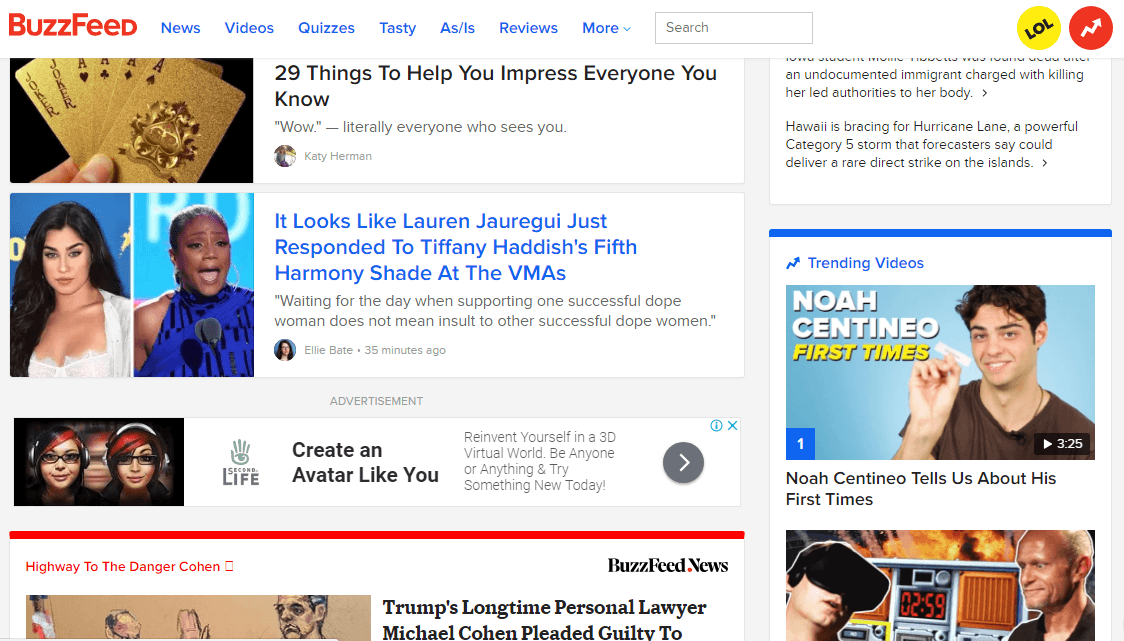
Exploring BuzzFeed, you can stumble upon the section called “BuzzFeed reviews”, if you move on to reading one of those reviews, you will also notice clickable ads on the left side of the page that blend with the rest of design.
Native ads are more relevant to the end user and definitely less annoying. Practice shows that native ad’s CTR is at least twice higher than a CTR of a non-native display ad. BI Intelligence predicts that native ads will generate 3x more revenue than non-native by 2021.
.png)
SmartyTip:
Native advertising is a powerful tool to promote your website, but how to enhance its benefits even more? The answer is simple: combine native ads with programmatic solutions. Apart from automating media buying and speeding up the whole process of advertising, a Demand Side Platform opens up new opportunities for targeting, let alone real-time reporting, all-platforms coverage, and intelligent optimization. It needs less than 1 sec to determine your target audience and show your ad on the right website to the right people.
Publishers can also benefit from native ads through Supply Side Platform and monetize own website, blog or an app. With every click on the ad taking place at their inventory, they will obtain an income. Through SSP dashboard the publishers are able to pre-define the type of the ad, size, position, set the preference for advertisers they want to work with and the floor price at which bid for placement can be accepted.
The Bottom Line of Our “How to Market Your Website” Guide
These 5 tools may be priority “ingredients” of your “marketing cocktail”, but we don’t recommend you to stop there. Season it with other working tactics, cause there is no proper way to find the perfect recipe for your brand promotion but to test different strategies on practice.
However, the future is automation. Companies that use the latest advertising automation software will always be one step ahead in promoting their website than their counterparts that haven’t adopted innovative solutions yet. SmartyAds stats confirm: 63% of successful brands utilize programmatic ad selling solutions for growing their revenue. So if you are still not on board, it’s time to join the club.
Ready to promote your website with cost-effective and highly-targeted ads? Try SmartyAds DSP and watch how your traffic grows.

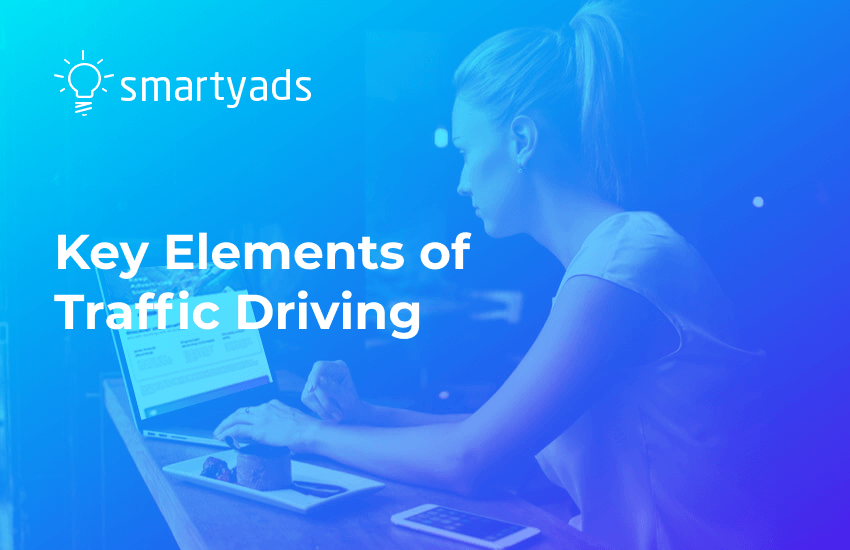
![In-App Advertising: the Complete Guide [Updated 2024]](/storage/uploads/2020/september/in-app-advertising-trends.png)
